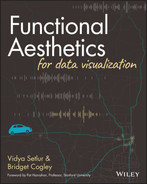
Conversation over a campfire
PART B
Semantics
Journalist Flora Lewis once wrote,
Learning another language is not only learning different words for the same things, but learning another way to think about things.
In the late 1970s, Nicaragua established its first Deaf schools. While the schools originally focused on teaching speech and reading, the students did something not seen or easily traceable in modern times: they spontaneously created a new language. By 1986, Dr. Judy Shepard-Kegl, an American Sign Language linguist, and her team of researchers observed the children, noting the clear distinctions between the first generation of signers and the second. Beyond communication, the children matured a sophisticated language within one generation. For many linguists, Nicaraguan Sign Language proved not only our innate desire to communicate but our abilities to create grammar and semantics to further nuance meaning.
This part focuses on how we harness that ability to create and share meaning: semantics. Beyond our abilities to communicate in real time, we are able to pass down knowledge through generations using both oral memorizations and written passages. This knowledge has transformed our trajectory and understanding of the world, just like the ability to create fire. Writing, in particular, allows us to build on knowledge in new and novel ways. It has transformed how we think and communicate, including how we visualize numbers and patterns.
Throughout the next chapters. we'll explore how semantics affects charts in isolation as well as together. We'll clarify a number of concepts that factor into linguistics and the semantic properties of what exactly charts express. Beyond charts as individual units, we'll also explore what happens when we combine them, including the grammatical constructs we impose while we design visualizations.
As we segue from perception to semantics, this section begins our journey to learn not only new names for things, but a whole new way to think about data visualization. Beyond perception, we'll look at how our brain finds patterns and systemizes them for meaning. The presentation of charts has matured to a new level of sophistication. Let's explore how the semantics of charts provides new light.
